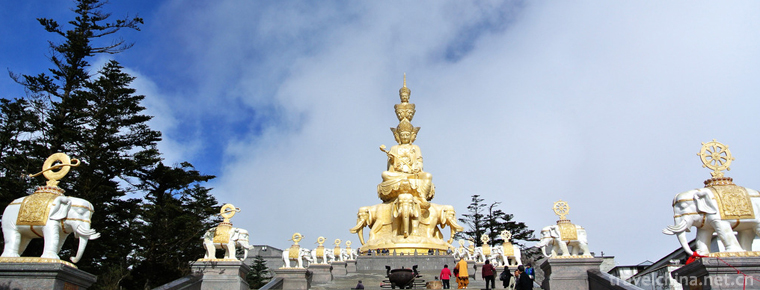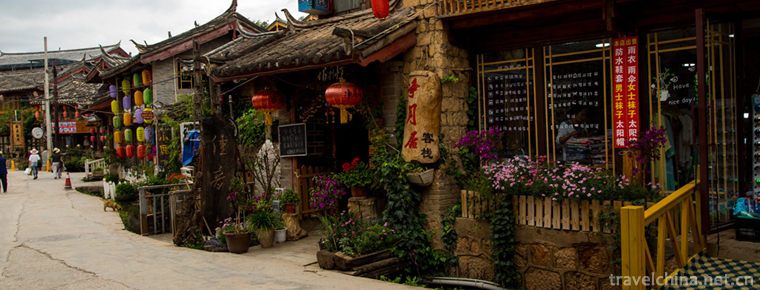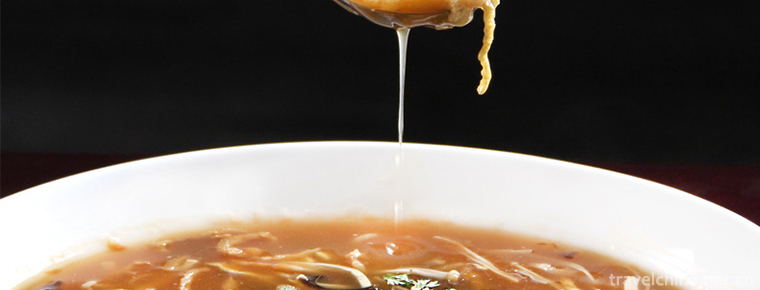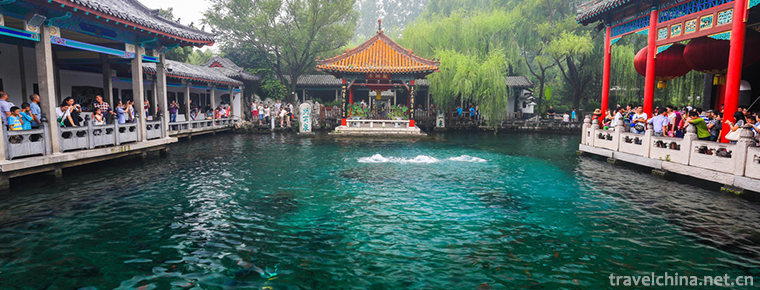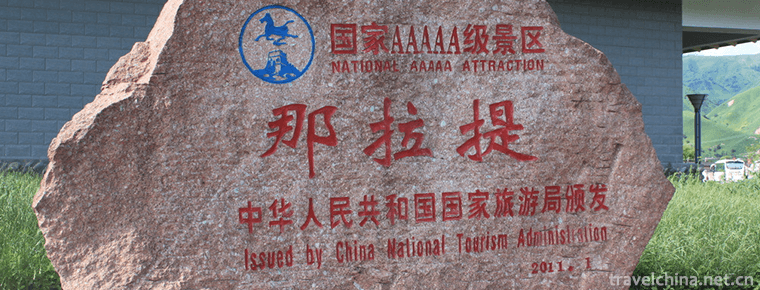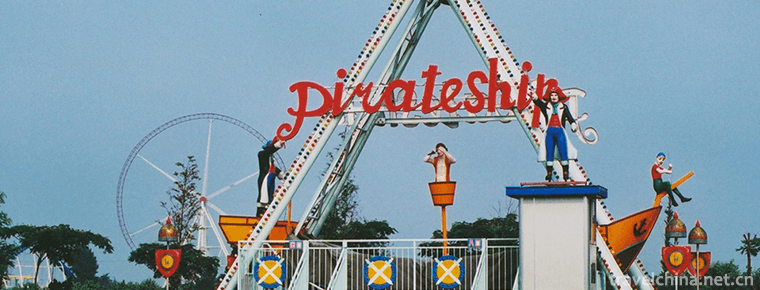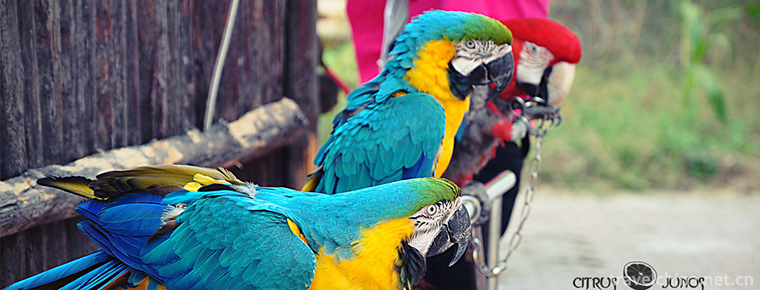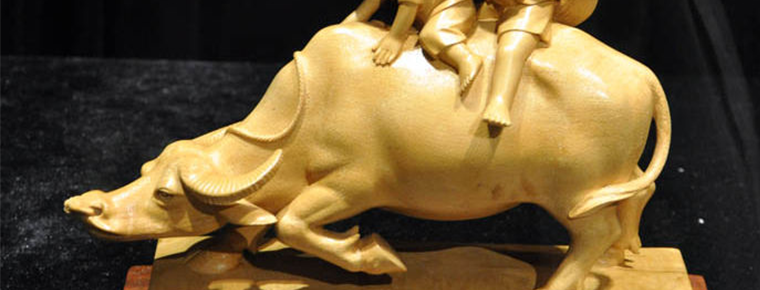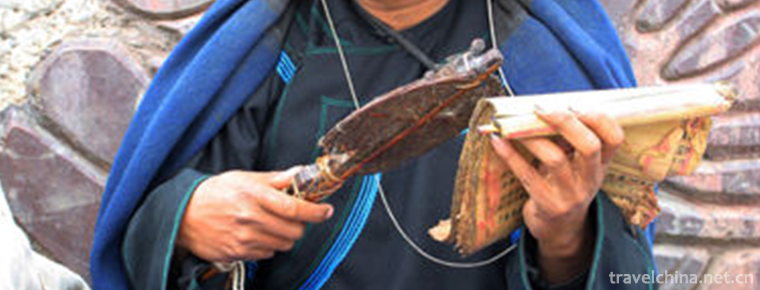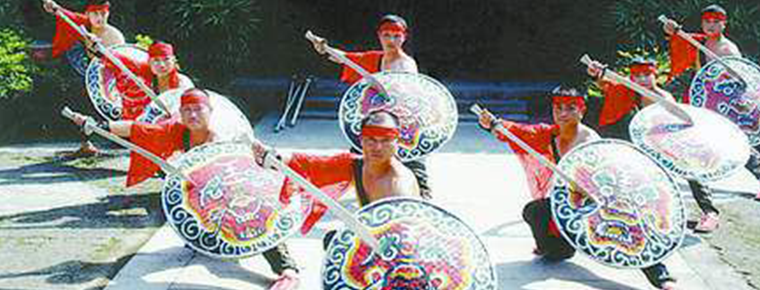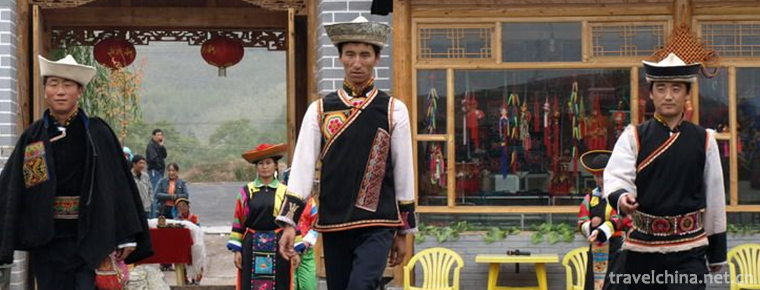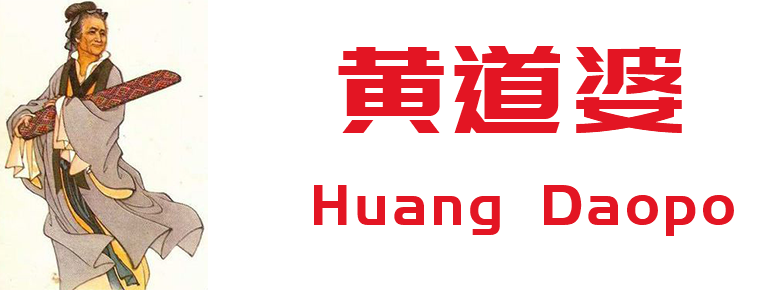Guwo Yushu Samurai Dance
Guwo Yushu Samurai Dance
Samurai dance is a unique style of etiquette folk dance spread in Yushu. It is called Guowa (or Guowa) in Tibetan. Guo refers to weapons in Tibetan. It means warriors with weapons. Wo refers to dancers who perform in important ritual occasions of temples and tribal people.
Historical origin
Historically, Yushu is a famous town of "Tang-Fan Ancient Road". When Princess Wencheng entered Tibet in the seventh century A.D., she had a magnificent journey of "flag display, ceremony opening, magnificence". She stayed here for a long time through Yushu, while resting her whole horse, training soldiers and spreading the original production technology. The princess also sent people to carve a Buddha statue and eight Bodhisattvas statues on the rocks of Beku, Yushu, and built a temple. The opening ceremony was held. The temple was named "Da Ri Tathagata Temple". It was worshipped by the local people. So far, the incense is very strong and the believers are endless.
The princess's entrance to Tibet has played a certain role in promoting the development of Tibetan culture and economy. This kind of honor guard and soldier drill in the Central Plains has been absorbed by the local Ben religion and become the ritual beach of Ben religion. Ben religion is the Tibetan primitive religion. Its main feature is a variety of worship. All things are spiritual. Samurai dance is an important part of Ben sacrificial activities.
When Princess Wencheng entered Tibet, Ben religion was still the state religion of the Tubo Dynasty. The struggle between Buddhism and Benzene had not yet become white-hot. Ben religion, in order to consolidate its dominant position, used the form of ceremonial guard in the Central Plains to strengthen and propagate its doctrine in sacrificial ceremonies.
For example, when performing a warrior dance, the first to appear is a number of warriors, who shoot and shout in order to worship the gods and clean the venue. This kind of shouting guns and shouts are common in Tibetan sacrificial activities. Next came the Tibetan flag and the music of Okingling, Sigu and Rao. Then two rows of warriors with crossbows and swords stepped out slowly and stepped on the music. This was very similar to the situation of Princess Wencheng entering Tibet described in the History of Da Ri Tathagata Temple. It was also similar to the murals of princesses entering Tibet in Tibetan temples we saw. It can be seen that the performance form of samurai dance was indeed influenced by the original Chinese language. Influences of chemical and benzene teaching stalls.
Spiritual meaning
Tibetans are fascinated by the worship of Buddhism, and Buddhism permeates the whole life of Tibetans. Yushu people think that performing Guowa is "God and I are happy together", and it also contains a kind of dignity, praise and perfection, which is the embodiment of self-spirit. Samurai dancers are adult men. They must be devout native people. It is forbidden to impart knowledge to others and women to sing and perform. Otherwise, they are impure to God.
Guowa's performance time must be selected for a specific day, time and star. Everyone not only enthusiastically participates, but also wears the most luxurious clothes in order to be auspicious. Dancers wear high eaves, red spikes, jewelry and jade hanging at the neck, wearing brocade silk ribbon, waist knife, brocade and satin clothes with black and white matching otter skin edge, appear noble, elegant, dignified, this is the highest etiquette dress of Yushu men.
Dance characteristics
Collective large-scale dance, the number of performers is unlimited, generally more than 40 people. Because the participants are middle-aged and old people, with luxurious clothes, solemn music and simple movements, they are dignified, solemn and mysterious.
From the appearance to the end of the dance, the choreography is rigorous, breaking the single change of the traditional folk dance troupe, and combining the ritual of "Yitan" exorcising ghosts and Demons and eliminating disasters with the content of ancient military exercises. Musical instruments with big drums, big rao, big trumpet, magnificent momentum, majestic. Dance emphasizes strength and momentum, calm and steady, bold and stretching.
The formation of warrior dance, no matter how long, as an early folk sacrificial and ritual dance, is very successful in both art and thought. It is a wonderful flower in the early Tibetan folk songs and dances, from which we can see the early Tibetan multi-cultural exchanges and fusion, but also the new era of Qinghai Yushu fresh cultural card.
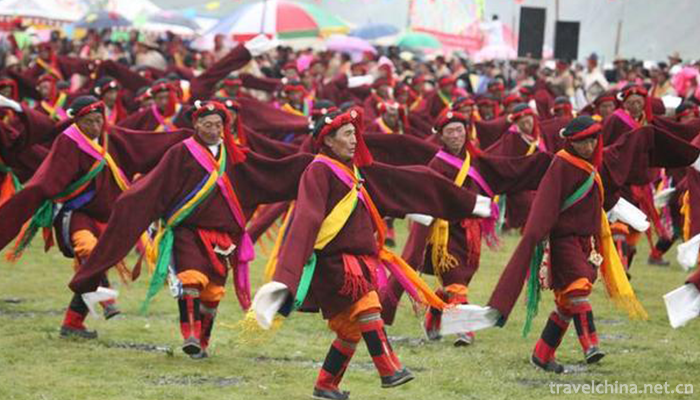
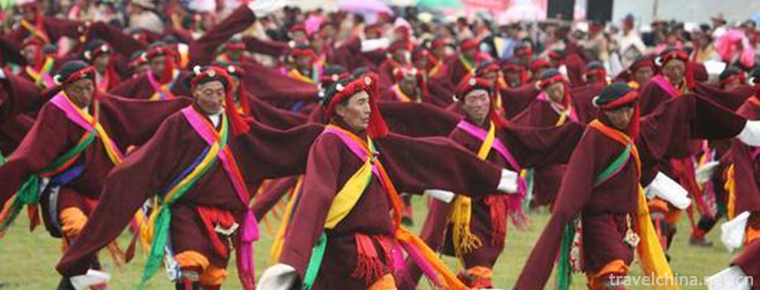
Guwo Yushu Samurai Dance
-
Mount Emei
Mount Emei is located in Mount Emei, Leshan City, Sichuan Province, China.
Views: 402 Time 2018-10-13 -
Free and unfettered hu hot soup
The authentic Xiaoyao Town Hu Hot Soup, produced in Xiaoyao Town, Xihua County, Zhoukou City, Henan Province, is a famous snack in China
Views: 312 Time 2018-11-26 -
Jinan World First Spring Scenic Area
Jinan World No. 1 Spring Scenic Area, located in the center of Jinan City, Shandong Province, is a national AAAAA-level tourist attraction, national key park, advanced unit of national spiritual civil
Views: 201 Time 2018-12-08 -
Narati Scenic Spot
Narati Tourist Scenic Area, located in Xinyuan County, Xinjiang, is located in the hinterland of Tianshan Mountains, the eastern end of the Ili Valley
Views: 158 Time 2018-12-12 -
Century Happy Park
Views: 366 Time 2018-12-19 -
Beijing Wildlife Park
Beijing Daxing Wildlife Park is located in the 10,000 Mu forest of Yuyuan Town, Daxing District. It is a large natural ecological park with animal protection, wildlife domestication and breeding and p
Views: 120 Time 2018-12-26 -
Boxwood carving
Boxwood carving is one of the traditional folk carving arts in Zhejiang Province. It uses boxwood as carving material and uses the natural form of boxwood, which is smooth, delicate in texture and sol
Views: 178 Time 2019-05-04 -
Wool Textile and Rolling Techniques
Flower felt is the most popular among all ethnic handicrafts in Xinjiang, and it has a long history. Felt caps from the 1st to 3rd centuries A.D. are among the cultural relics unearthed at Lop Nur Lou
Views: 298 Time 2019-05-25 -
Shaheteng Array
The rattan array is the only ancient combat technology in northern China. It has gone through hundreds of years since Ming Dynasty. Today, it only exists in Shilipu Village, Shahe City, Hebei Province
Views: 361 Time 2019-06-12 -
Tu Costume
Women usually wear embroidered small collar and long slant-skinned shirt. The sleeves are made of red, yellow, orange, blue, white, green and black seven-color cloth rings. They are bright and beautif
Views: 206 Time 2019-06-23 -
Huang Daopo
Huang Daopo (1245 - 1330), also known as Huang Po , Yellow mother , Songjiang prefecture Wu Najing town (now Xuhui District, Shanghai) Huajing town People, famous at the end of Song Dynasty and early
Views: 141 Time 2019-09-07
